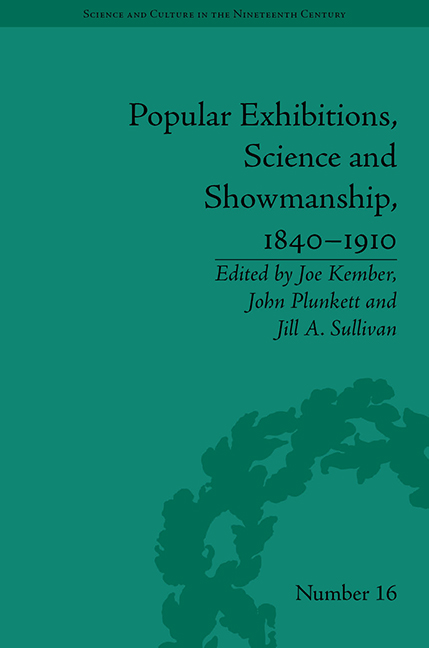Book contents
- Frontmatter
- CONTENTS
- Acknowledgements
- List of Contributors
- List of Figures and Tables
- Introduction
- Part I Science and Spectacle
- Part II Word and Image
- 4 Beyond Scientific Spectacle: Image and Word in Nineteenth-Century Popular Lecturing
- 5 Daniel William Cahill and the Rhetorical Geography of Science and Religion
- 6 Narrativizing ‘The World's Show’: The Great Exhibition, Panoramic Views and Print Supplements
- Part III Staging Knowledge
- Part IV The Politics of Display
- Notes
- Index
6 - Narrativizing ‘The World's Show’: The Great Exhibition, Panoramic Views and Print Supplements
from Part II - Word and Image
- Frontmatter
- CONTENTS
- Acknowledgements
- List of Contributors
- List of Figures and Tables
- Introduction
- Part I Science and Spectacle
- Part II Word and Image
- 4 Beyond Scientific Spectacle: Image and Word in Nineteenth-Century Popular Lecturing
- 5 Daniel William Cahill and the Rhetorical Geography of Science and Religion
- 6 Narrativizing ‘The World's Show’: The Great Exhibition, Panoramic Views and Print Supplements
- Part III Staging Knowledge
- Part IV The Politics of Display
- Notes
- Index
Summary
In the opening of Little Henry's Holiday at the Great Exhibition (1851), Henry and his little sister Rose tell their father about their struggle to form a mental picture of the Great Exhibition and its purpose-built home, Joseph Paxton's Crystal Palace:
‘What Papa,’ said little Henry, – 'what is the Exhibition? Really Rose and I have been trying to imagine what it is. Every day after you have done reading the TIMES, we have looked over it by ourselves; we have read that there is a great building made of iron and glass, that it is 1851 feet long, and – something broad, I forget; – and that there is a nave and a transept. But we can't imagine it. How can we get the idea of such a large place into our heads! – unless – we ‘Unless we see it,’ added Rose, ‘then we might. Don't you think, papa, that we had better go and see it?’
This little sketch operates foremost as a handy framing device for the rest of the story. The notion that the Exhibition simply ‘must be seen to be believed’ provides the narrative impetus for a family outing to the great show in Hyde Park, and the rest of the picture book offers detailed didactic descriptions of the Exhibition displays, as the reader follows Henry, Rose and Papa around the Palace.
- Type
- Chapter
- Information
- Popular Exhibitions, Science and Showmanship, 1840–1910 , pp. 115 - 132Publisher: Pickering & ChattoFirst published in: 2014



